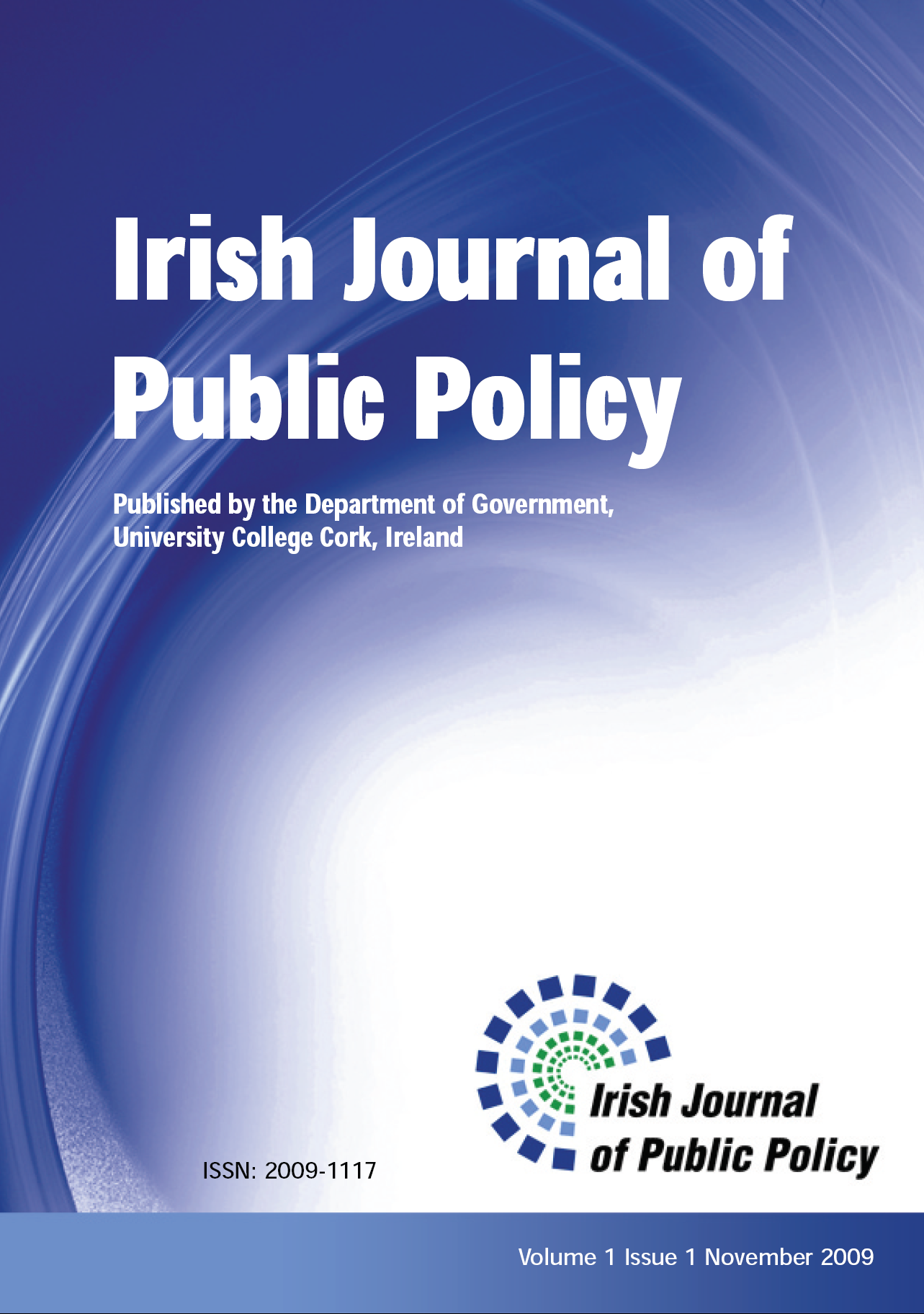An aging population – have we got an Oral Health Policy?
DOI:
https://doi.org/10.33178/ijpp.1.1.3Abstract
This paper highlights the impact of an aging population on the oral health of the elderly and to recommend policy measures to address the oral health inequities experienced by older people. It analyses data based on examinations carried out in the National Survey of Adult Oral Health on a sample of 714 adults aged 65 and older using commonly used parameters of dental health. The survey consisted of a clinical oral examination, a detailed questionnaire to establish behaviour patterns and attitudes, and focus group discussions to establish broader health and quality of life issues. The survey found that 65 per cent of the elderly had a medical card and thus were eligible for free dental services. However, just 14 per cent availed of the service even though 79 per cent had a clinical need for treatment. Over 20 per cent never visit the dentist and only 44 percent attend the dentist regularly. Older people were not well informed of the oral health needs and tended to visit the dentist for symptomatic reasons. Barriers to care included reduced morbidity, cost of transport, and fear of the dentist. It concludes that oral health promotion is required to raise awareness of oral health and of the Dental Treatment Services Scheme (DTSS) entitlements, promotion by other healthcare professionals and carers who are in frequent contact with older people, the provision of domiciliary care for those who cannot access clinic-based services and integration between the dental profession and medical profession.References
Allen, F. P. (2003), ‘Assessment of Oral Health Related Quality of Life.’ Health and Quality of Life Outcomes, vol. 1, no. 3.
Beirne, P.V. (2003), Fluoridation and the Politics of Risk. Unpublished Doctoral Dissertation,University College Cork..
Central Statistics Office, (2004), Population and Labour Force Projections 2006-2036. Dublin: The Stationary Office.
Chauncey, H.H., Muench, M.E., Kapur, K.K. and Wayler, A.H. (1984), ‘The Effect of the Loss of Teeth on Diet and Nutrition’. International Dental Journal, vol. 34, no.2, pp.98-104.
Daly, F. (1998), Oral Health Needs Assessment of Residents in an Elderly Institution. Department of Dental Public Health & Community Dental Education, unpublished MSc in Community Dental Practice King's College London.
Department of Health and Children. (2002), Report of the Forum on Fluoridation 2002 – Executive Summary.
Department of Health and Children. (2007), Long-Stay Activity Statistics 2005.
Department of Health and Children. Dublin, (2000), National Health Promotion Strategy 2000-2005.
Ettinger, R. L. and Mulligan, R. (1999), ‘The future of dental care for the elderly population.’ Journal of the Californian Dental Association vol. 27, no. 9, pp. 687-692.
Health Act. (2004).
Lemasney, J. and Murphy, E. (1984), ‘Survey of dental health and denture status of institutionalized elderly patients in Ireland.’ Community Dentistry and Oral Epidemiology vol.12, no.1, pp. 39-42.
Marcenes, W., Steele, J.G., Sheiham, A. and Walls, A.W. (2003), ‘The Relationship between Food Selection, Nutrient Intake, Nutritional Status, and Body Mass Index in Older People’. Cadernos de Saúde Pública, vol.19, no. 3, pp. 809-16.
National Council on Ageing and Older People (1998), Adding Years to Life Life to Years: A Health Promotion Strategy for Older People. Report No. 50.
National Economic Social Forum (2005). Care for Older People. Report No. 32.
O’Farrell, M., Parnell, C. and Quinn, D. (2005), Preliminary Report of a Pilot Oral Health Needs Assessment Survey. Trim, Co. Meath: Meath Dental Services.
Slade, G.D., Gansky, S.A. and Spencer, A.J. (1997), ‘Two-year incidence of tooth loss among South Australians aged 60+ years.’ Community Dental and Oral Epidemiology vol. 25, pp.429-437.
Vargas, C. M., Kramarow, E.A. and Yellowitz, J.A. (2001), The Oral Health of Older Americans. Aging Trends, No.3. Hyattsville, Maryland: National Centre for Health Statistics.
Whelton, H., Crowley, E., O’Mullane, D., Woods, N., McGrath, C., Kelleher, V.,Guiney, H., and Byrtek, M., (2007a.), Oral Health of Irish Adults 2000 – 2002. Dublin: Department of Health and Children.
Whelton, H., O’Mullane, D., Cronin, M., Woods, N., Kelleher, V., Guiney, H., Tobin, M., (2007b.), Dental Treatment Services Scheme – Service Utilisation and Treatment Need (Lot 9).
Whelton, H., Woods, N., Kelleher, V., Crowley, T., Stephenson, I., and Ormsby M. (2008), Evidence Based Options for an Oral Health Policy of Older People. National Council on Ageing and Older People and Health Research Board, Dublin.
Woods, N. (2007), ‘Factors Influencing the Need for Dental Care Amongst the Elderly.’ European Journal of Health Economics, Vol. 7 Supplement 1.
Downloads
Published
Issue
Section
License
Copyright (c) 2009 the author(s)

This work is licensed under a Creative Commons Attribution-NonCommercial-NoDerivatives 4.0 International License.



